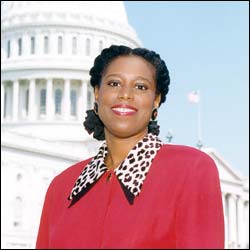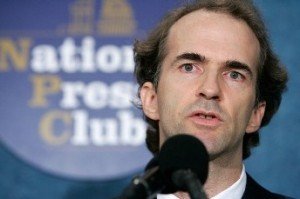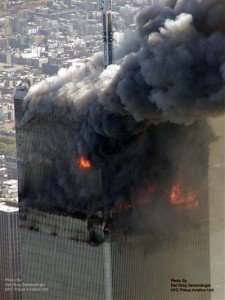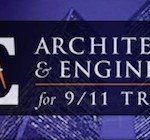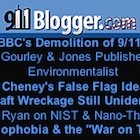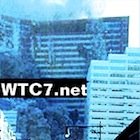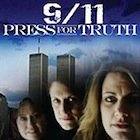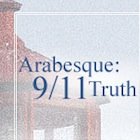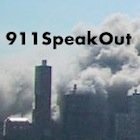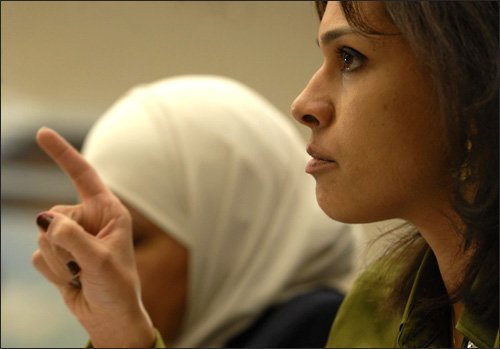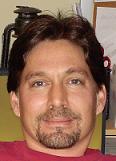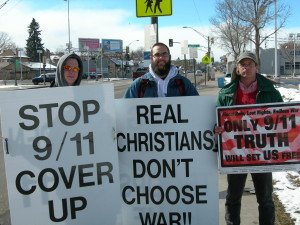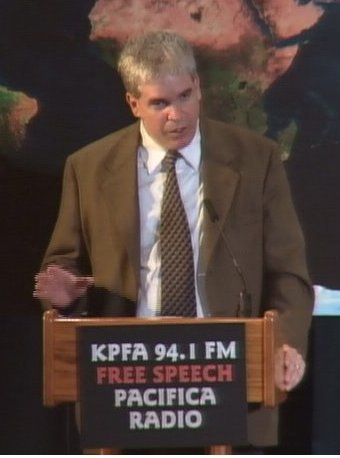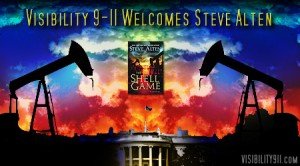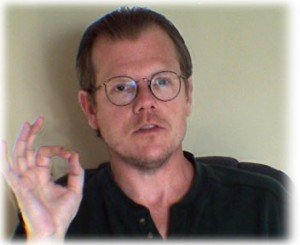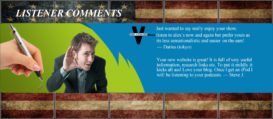There are fundamental grounds to reject the analysis put forward by CIT (Citizen Investigation Team), which proposes that a large plane approached the Pentagon from a northerly angle (north of the CITGO gas station) incompatible with the external and internal damage path.* The plane, they say, flew over the Pentagon, masked by a synchronized internal explosion and smoke cloud (which CIT compares to a “magic show”), and all the damage was staged.
The issue goes beyond the selection of witnesses or the implausibility of their fly-over hypothesis and elaborate staging of all the physical evidence. It comes down to the validity of their interview methodology and the illogic of the inferences drawn from their data. Their flawed methodology invalidates the entire process.
I will focus on Craig Ranke’s telephone interview of Albert Hemphill because we have a complete, unedited, start-to-finish record of the interview as well as two follow-up phone interviews by Jeff Hill, an independent researcher living in Canada, that allow Mr. Hemphill to express himself fully about the Ranke interview and clarify his testimony. Here are the three interviews:
- Craig Ranke – Hemphill Phone Interview, (transcript)
- Jeff Hill – First Hemphill Phone Interview, (transcript)
- Jeff Hill – Second Hemphill Phone Interview, (transcript)
The other interviews used in the CIT videos, on the other hand, have been subject to selection and editing, so we don’t know the full context that surrounds them. They are therefore less helpful in understanding CIT’s methodology.
Albert Hemphill was a civilian employee of the Navy with an office on the top floor of the 8th wing of the Navy Annex overlooking the Pentagon. The line of sight from his office window to the impact point on the Pentagon passed directly over the CITGO gas station. His line of sight was eastward, so north was to his left and south was to his right. CIT claims Albert Hemphill as a north path witness. Rather than simply accepting this characterization, listen to Hemphill’s actual testimony.
Here are excerpts from Albert Hemphill’s characterization of the flight path.
5:52 [Hemphill] he would have been to my, over my right shoulder.
6:02 [Hemphill] he clipped a street light.
6:51 [Ranke] when you saw it pass the gas station did it look like he was flying straight or banking or turning?
[Hemphill] Diving
[Ranke] Diving
[Hemphill] You could hear the spooling of the engines, the distinctive whine of those things being wound up. And he kicked in, in my opinion, like he kicked in a little bit of right rudder and threw in some aileron [def: flaps on the wings that control the roll of the plane] because he hit the Pentagon at about the second window level. He did not hit the ground. He did not touch the ground. It smacked right into the building.
7:47 [Hemphill] right over the bridge
10:04 [Ranke] Did you see it actually hit light poles or did you just hear about that afterwards?
[Hemphill] I saw him clip it.
[Ranke] Saw it clip a light pole.
[Hemphill] Yeah.
10:15 [Ranke] Did you notice the cab or anything like that?
[Hemphill] Nah, I don’t remember seeing a cab. I’ve heard that one. I don’t remember a cab. It may have been there, but there’s so much going on, you know you only have a sight picture there, you know we’re talking seconds. So, you know, when people say stuff like that you have to be careful that you don’t absorb in stuff that they have said that you didn’t really see, that correlates with your story, and what you witnessed.
10:49 [Ranke] But you say you’re absolutely certain that you did see it clip a light pole?
[Hemphill] Yeah, because it was like a flash with it, you know
[Ranke] A flash? Did you see a light pole go flying or anything like that?
[Hemphill] No. No, no, no. You just, you see the kinda a glance or something, a flash of a wing catching it or something.
[Ranke] Interesting. Did you see it hit more than one pole, or just one
[Hemphill] Just one is all I picked up. It may have been more. I don’t know.
16:48 [Ranke] How sure are you that it was directly over the Navy Annex as opposed to being on the complete south end of Columbia Pike, in fact I mean on the south side of the VDOT building. You know where that communications antenna tower that there is on the other side of Columbia Pike there?
[Hemphill] Yeah. I know where it is.
[Ranke] What are the chances that it was on the south side of that, between that and the highway?
[Hemphill] I think that’s over a little bit far.
27:06 [Ranke] Do you recall the location the light pole is that you saw get hit?
[Hemphill] I think that was one of the ones up there on 27, I believe it was right, let me think now, the um, you’ve got the bridge, it was on the side of the bridge heading toward Rosslyn.
[Ranke] So the north side.
[Hemphill] It would be the north side, yeah.
38:02 [Hemphill] Now the plane I saw, I saw one plane and I saw it hit.
[…then again, after Ranke concluded that Hemphill must have been deceived by the explosion…]
39:36 [Hemphill] but all I can tell you is that I saw the one plane and what I saw was I saw it hit.
[For more detail and context, listen to the full interview (transcript)]
Let’s summarize Hemphill’s key testimony.
- The plane came in over his right shoulder, i.e. to his south, therefore, by implication, south of the CITGO station.
- The VDOT tower is south of the Navy Annex. He estimates that the plane was not that far south. i.e. south but probably not that far south. This statement would not make sense if the plane were to his north, so this answer confirms that the plane was on a south path.
- The plane flew right over the bridge, the site of the first two light poles.
- He saw it hit one light pole. He knew from news reports that more light poles were hit, but he personally witnessed only one and carefully limits his testimony to what he actually saw. As a matter of fact, the first light pole would have been clipped by the right wing which would have been hidden on the far side of the plane from his vantage point. The second light pole, on the north side of the bridge (which is where he located it), was clipped by the left wing and would be visible from his vantage point. The remaining light poles were lower down, not up on the bridge. Hemphill’s testimony here is restrained and precise. The one light pole he could most plausibly have seen was the exact pole he testifies that he saw.
- The plane was diving and he saw it approach the Pentagon at the second floor level while it was not obscured by smoke, so there is no possibility that the plane could pull up in time to clear the Pentagon roof.
- To the very end, even as Ranke tried to persuade him otherwise, Hemphill repeatedly emphasizes his own direct observation that there was only one plane and that it hit the Pentagon.
- Hemphill was an exceptional eyewitness who was very conscious of the dangers of mixing his actual observations with other material he had learned along the way. As he put it, “you have to be careful that you don’t absorb in stuff that they have said that you didn’t really see, that correlates with your story, and what you witnessed.”
After hearing Hemphill’s direct eyewitness testimony, Ranke pushed him to concede that the plane flew north of the CITGO gas station, which he then used to dismiss the rest of his testimony as being inconsistent with this one point. Listen to how this was brought about:
7:34 [Ranke] Now when you saw it, let’s back up a little bit. When you saw it pass the gas station, what side of the gas station was it on? Was it on the again, on the Arlington Cemetery or north side, or else perhaps the south side, the other side?
7:47 [Hemphill] You know it’s hard to say, it looked like it went right over the top to me, you know, because of the way its flight path was, but you know you would have come pretty much right smack over the top of it, right over the bridge there, it takes you over to I think on the right if I did all those years ago, I said 110, I meant 27.
8:08 [Ranke] Right
8:08 [Hemphill] But he went right over there towards where the old heliport was, so if you go from where the old heliport was and you draw a line straight back over the Navy Annex, it’s going to take you pretty much over the gas station.
8:22 [Ranke] OK, but would you say if you had to say if it was leaning towards one side or the other of the gas station, perhaps a portion of the plane, or did it look directly over the top? Or what do you think?
8:32 [Hemphill] Yeah, I would say more towards the cemetery side
8:36 [Ranke] a little more towards the cemetery side, OK. And uh well it was interesting cause you also mention that the blast from the explosion knocked you back onto your desk.
8:47 [Hemphill] Yeah, it was like a shock wave of a like a 2000 pounder going off. No, just a, you could hear the deep, deep rumble and then boom, it just caused everything on the Annex to just shake and stuff rattled and it just forced me back on the desk.
Here Ranke induces Hemphill to contradict himself. Hemphill has already shown himself to be a south path witness in multiple ways. An honest interviewer would point out the contradiction and ask for clarification. This is, after all, the focal point of the interview, from Ranke’s perspective, so one would think it would be extremely important to get it right. But Ranke does not do this. He restates the questionable claim without comment then changes the subject to something entirely different. Has he elicited Hemphill’s considered opinion or has he led him into a rhetorical trap?
Realize that this phone interview was conducted in May, 2010, nearly nine years after the event. Hemphill no longer worked for the Navy. Wing 8 of the Navy Annex had been torn down. He was not looking at any kind or map or diagram during the phone call. He was going from memory as to the alignment of various features. When pushed the first time on whether the plane flew to one side or the other of the CITGO station, he declined both alternatives and said it went right over the top of the CITGO station, which, according to his memory, was equivalent to going right over the bridge. (In reality the two features don’t line up.) To go over the bridge the plane would have to go south of the CITGO station.
Having answered that to the best of his recollection the plane flew over the top of the CITGO station, Ranke continues pushing, “OK, but would you say if you had to say if it was leaning towards one side or the other of the gas station, perhaps a portion of the plane, or did it look directly over the top? Or what do you think?” He is clearly telling Hemphill he is unsatisfied with his previous answer. Finally Hemphill answers, “Yeah, I would say more towards the cemetery side.”
It is troubling that Ranke ignores Hemphill’s first answer and persists in digging for a different answer. “…if you had to say,” “…if it was leaning towards one side or the other,” “…perhaps a portion of the plane.” This is leading the witness, if not badgering the witness. Such questioning is bad practice because it distorts the testimony. It has no place in scientific data gathering interviews since the goal is to get at true memories uninfluenced by the questioner.
Later in the conversation Ranke returns to the north path issue in order to solidify Hemphill’s support for his Pentagon fly-over hypothesis. However, he does so in the context of telling Hemphill what many other witnesses had said who were supposedly in a better position to see what happened.
Hemphill concedes, “anybody who was out and about right then in that area would have had a great vantage point if they were at that gas station.” Ranke is not asking Hemphill for his own memories as an independent witness, but rather urging him to go along with what others had supposedly said. The Asch Conformity Experiment comes to mind. It has been shown experimentally that when subjects feel alone in their perceptions they show a tendency to ignore their own perceptions and go along with the crowd. Ranke is explicitly asking Hemphill to step back from his eyewitness role and accept a belief based on hearsay. This by itself should be enough to disqualify the interview as having any scientific merit. He commends Hemphill and tells him that “what you saw does corroborate these other witnesses.” He uses the word “corroborate” 18 times in the conversation, as though this witness needs praise or reassurance for going along with what other witnesses have said, and ignoring the fact that nothing in Hemphill’s testimony “corroborates” the north path story except for that single concession urged by the interviewer. Hemphill is not being treated as though his own first-hand memories were the legitimate focus of the interview.

In Jeff Hill’s second phone interview with Hemphill, he reminds Hemphill of his earlier statement to Craig Ranke that the plane was on the Arlington Cemetery side (north side) of CITGO. Hemphill strenuously objects,
18:6 [Hemphill] “No, absolutely wrong. It flew over the gas station more to the Columbia Pike side.
…
22:16 [Hill] So like I guess when you told Craig that it was slightly more toward the Arlington Cemetery side you were just like mistaken in the moment?
[Hemphill] No I didn’t say that. I said my office is more toward the Arlington Cemetery side. The aircraft was not more toward the cemetery. It’s more toward Columbia Pike.
The words he used earlier seemed to be telling Craig the opposite, but this comment clarifies what was in his mind. One thing that did a lot to clear up his testimony was that Hill had emailed Hemphill a photograph of the area from Google Earth with a line of sight drawn on it from Hemphill’s office to the impact point (similar to the illustration included here but without the extra annotations). That line passes directly over the center of the CITGO gas station. With the geometry of the situation clearly in mind, Hemphill had no trouble reconstructing the plane’s path and he was able to state definitively that the plane was on the south side.
Once Ranke had maneuvered Hemphill into stating the plane was on the cemetery side (north side) of the CITGO station, he inferred that since that observation was incompatible with hitting the Pentagon or the light poles, those direct memories and the physical evidence had to be false and only the north path observation was true. (How is this even logical? Why not infer from the direct observations and the physical evidence of the light poles and the memory that the plane came over his right shoulder that the north path statement was false?) Hemphill didn’t buy Ranke’s reasoning. He insisted repeatedly, “Now the plane I saw, I saw one plane and I saw it hit.” At the very end of the conversation Hemphill reaffirms that he stands by his original statements.
Elevating the significance of a memory of a seemingly minor detail, many years after the fact, is a common thread in nearly all of the Ranke interviews. The single detail CIT cites as key to understanding the Pentagon event is the path of the approaching plane. Ranke’s sales pitch to the world is that surely the eyewitnesses near the CITGO station would remember which side of the station the plane passed by as it approached the Pentagon. That is not obvious, however. It depends entirely on when a witness became aware of and focused intently on the plane. The event went suddenly from nothing particularly unusual to an earth shaking event: a plane hitting the Pentagon, seconds later. All of the CIT witnesses, who were in a position to see it, testified that they saw the plane actually hit the Pentagon. For some, the earlier path of the plane might have been a vivid direct memory. The level of detail offered by Hemphill, the nearness and position of the plane over his right shoulder, the sound of the engines spooling up, his detailed observation of the plane’s maneuvers, the flash as it hit a specific light pole, the dive, and the place where it hit the Pentagon wall, and the consistency of these observations with the physical evidence all indicate this is true in his case. Others may have been only vaguely aware of the plane initially with growing awareness as it was about to hit the Pentagon. For these people the prior path of the plane could well have been a mental reconstruction rather than a direct memory. An unbiased interviewer would recognize a memory that the plane hit the building as more likely true than any memories of a path inconsistent with that direct observation, especially when the eyewitness expresses certainty that it actually hit. The explosion and smoke cloud would not obscure the impact. They would follow the impact.
When I was in a PE class in the eighth grade I jumped over a low-hanging net, tripped and knocked myself out. I woke up in the nurse’s office some time later. I remember the accident clearly. The problem is I have two equally clear and competing memories of the event, and I cannot, even to this day, discern which is what actually happened. I remember jumping over the net as we were dismissed from the assembly formation at the start of class, but I have an equally clear and compelling memory that the event occurred at the end of the period, as the bell rang and we were running to the locker room. Tripping over the net, falling, and waking up in the nurse’s office were clear and legitimate memories burned into my brain. The circumstances surrounding my jumping over the net were mental reconstructions, equally as vivid as the undeniable memories, but in reality, not memories at all.
Our minds flesh out the details surrounding distant memories, as my own experience illustrates. The methodology at work in the CIT interviews is to distract a witnesses from an actual, vivid memory of a plane impacting a building, and soliciting, or even planting by suggestion, a minor secondary detail. This sets the stage for the witness to reconstruct or elaborate on the actual memories to “fill in the gaps” or to satisfy the questioner. That detail is then elevated to be considered the single most significant element of the testimony, and used to discount both the primary memory and the physical evidence. The witnesses themselves are then declared to have been deceived about the discordant elements of their testimony. The witnesses may come back and protest loudly that the one thing they know for certain is that the plane actually hit the building, but such protestations are ignored. When interviews are conducted in this manner, whatever the reason, the conclusions have no claim to any validity and should be dismissed.
Notes:
*External damage path: scarred VDOT traffic camera pole and notched tree on Hwy 26 overpass, five downed light poles, damaged and rotated large generator trailer, damaged fence around the generator trailer, scattering of a number of cable spools, notch in a low concrete retaining wall, and severed tree in front of Column 16.
Internal damage path: nearly 100 foot opening in the first floor of the Pentagon E-ring wall, external scars corresponding to the wing tips and tail of an impacting plane, a pattern of damaged and destroyed interior columns on the first floor of the Pentagon E, D, and C-rings and punch-out hole in the C-ring inner wall, all in line with the external damage path.
